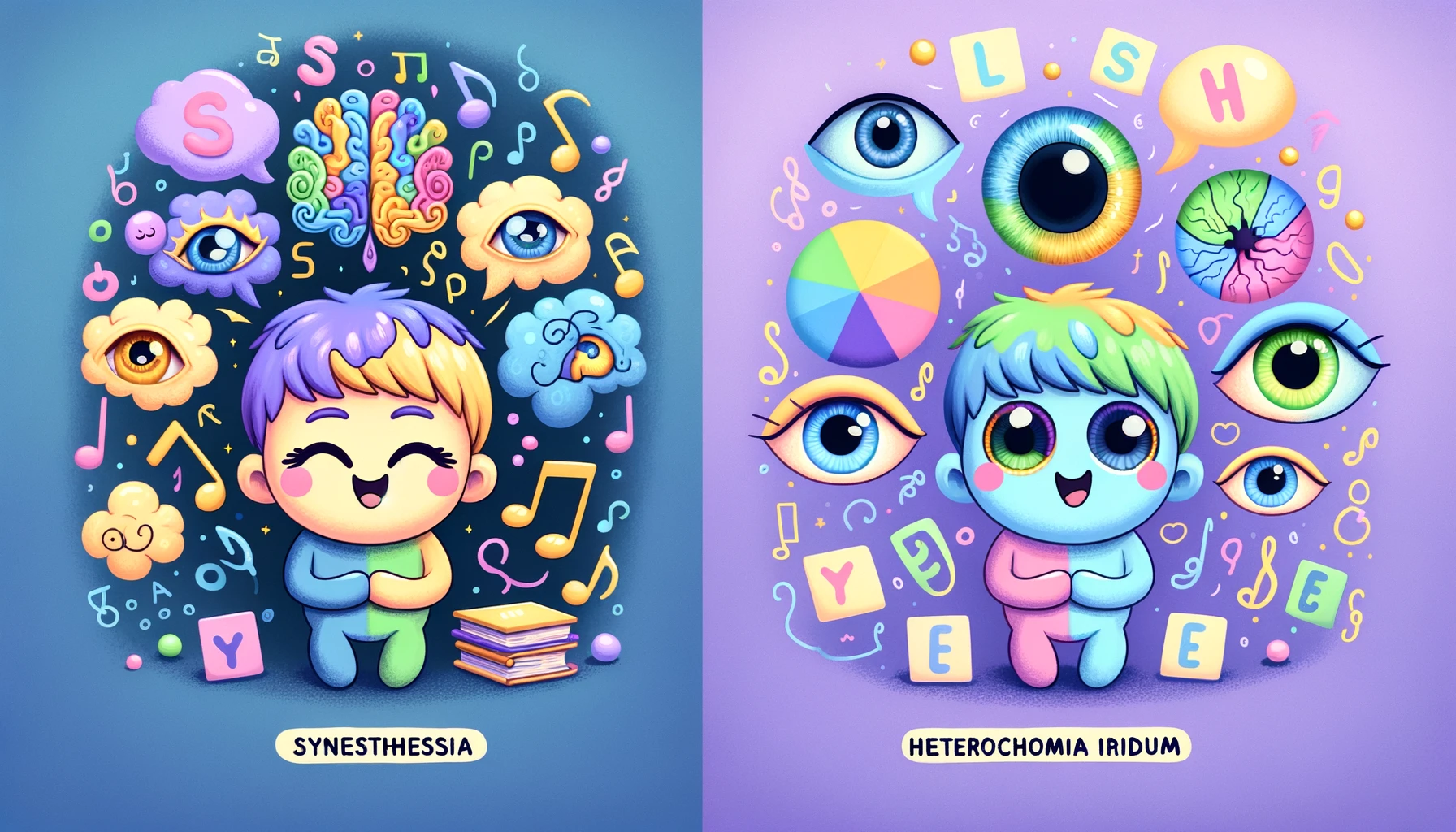Synesthesia vs. Heterochromia Iridium: Understanding Their Differences and Significance
Synesthesia vs. Heterochromia Iridium: Understanding Their Differences and Significance
Table of Contents
- Introduction to Synesthesia and Heterochromia Iridium
- What is Synesthesia?
- Types of Synesthesia
- Causes of Synesthesia
- What is Heterochromia Iridium?
- Types of Heterochromia Iridium
- Causes of Heterochromia Iridium
- Characteristics of Synesthesia
- Characteristics of Heterochromia Iridium
- Synesthesia vs. Heterochromia Iridium: Key Differences
- Significance of Synesthesia
- Significance of Heterochromia Iridium
- Conclusion
- References
Synesthesia vs. Heterochromia Iridium: Understanding Their Differences and Significance
Introduction to Synesthesia and Heterochromia Iridium Synesthesia and heterochromia iridium are two fascinating and distinct conditions that affect individuals in unique ways. Synesthesia is a neurological condition where stimulation of one sensory pathway leads to involuntary experiences in another sensory pathway. Heterochromia iridium, on the other hand, is a condition characterized by differences in coloration of the iris. This article explores the differences, characteristics, and significance of synesthesia and heterochromia iridium.
What is Synesthesia? Synesthesia is a perceptual phenomenon where stimulation of one sensory or cognitive pathway leads to automatic, involuntary experiences in a second sensory or cognitive pathway. For example, a person with synesthesia might hear colors, see sounds, or taste shapes.
Types of Synesthesia
There are several types of synesthesia, including:
- Grapheme-Color Synesthesia: Letters or numbers are perceived as inherently colored.
- Chromesthesia: Sounds involuntarily evoke an experience of color, shape, and movement.
- Lexical-Gustatory Synesthesia: Certain words or sounds trigger specific taste sensations.
- Spatial Sequence Synesthesia: Numbers, dates, or sequences are perceived as occupying physical locations in space.
- Mirror-Touch Synesthesia: Individuals feel the same sensation that another person feels, such as touch.
Causes of Synesthesia
The exact cause of synesthesia is not fully understood, but it is believed to involve cross-activation between sensory regions in the brain. It may have a genetic component, as it often runs in families. Some researchers suggest that it results from increased connectivity between different areas of the brain.
What is Heterochromia Iridium? Heterochromia iridium is a condition characterized by variations in the coloration of the iris. It can occur in one eye (complete heterochromia) or within a single iris (sectoral or partial heterochromia).
Types of Heterochromia Iridium
There are three main types of heterochromia iridium:
- Complete Heterochromia: One iris is a different color from the other iris.
- Sectoral (or Partial) Heterochromia: A portion of one iris is a different color from the rest of the iris.
- Central Heterochromia: The inner ring of the iris is a different color than the outer ring.
Causes of Heterochromia Iridium
Heterochromia iridium can be congenital (present at birth) or acquired due to injury, disease, or medication. Causes include:
- Genetics: It can be inherited and may occur in isolation or as part of a genetic syndrome.
- Injury or Disease: Trauma, inflammation, or certain eye conditions can result in heterochromia.
- Medications: Some medications, particularly those used to treat glaucoma, can cause changes in iris coloration.
Characteristics of Synesthesia Individuals with synesthesia often experience unique and vivid perceptions:
- Involuntary: Synesthetic experiences happen automatically and cannot be controlled.
- Consistent: The associations are consistent over time. For example, a synesthete who sees the letter “A” as red will always see it as red.
- Perceptual: These experiences are genuine perceptions, not just imagined or remembered.
Characteristics of Heterochromia Iridium Heterochromia iridium is typically characterized by:
- Distinct Iris Colors: Visible differences in the color of the irises, either between the two eyes or within a single iris.
- No Impact on Vision: Heterochromia iridium generally does not affect vision or eye function.
- Cosmetic Difference: It is usually a benign condition with cosmetic implications only.
Synesthesia vs. Heterochromia Iridium: Key Differences
- Nature of the Condition: Synesthesia is a neurological condition involving sensory cross-activation, while heterochromia iridium is a physical variation in eye color.
- Perceptual Experience vs. Physical Appearance: Synesthesia affects perception and sensory experiences, whereas heterochromia iridium is a visible trait affecting the appearance of the iris.
- Impact on Daily Life: Synesthesia can influence creativity and sensory processing, while heterochromia iridium is typically a benign, cosmetic difference with no impact on vision.
Significance of Synesthesia Synesthesia has several implications:
- Creativity and Art: Many synesthetes report that their condition enhances creativity, and some well-known artists, musicians, and writers have synesthesia.
- Research and Understanding: Studying synesthesia can provide insights into brain function, sensory processing, and neural connectivity.
Significance of Heterochromia Iridium Heterochromia iridium is often noted for its uniqueness:
- Aesthetic Appeal: It is often considered an attractive and unique trait.
- Medical Relevance: In some cases, it can be a sign of an underlying condition, so it may prompt further medical investigation.
Conclusion Understanding the differences and significance of synesthesia and heterochromia iridium highlights the diversity of human experiences and physical traits. While synesthesia enriches sensory perception, heterochromia iridium adds to the visual diversity of eye color. Both conditions, though different in nature, contribute to the fascinating complexity of the human body and brain.
<ⓒ WizardMedics (wizardmedics.com)>







